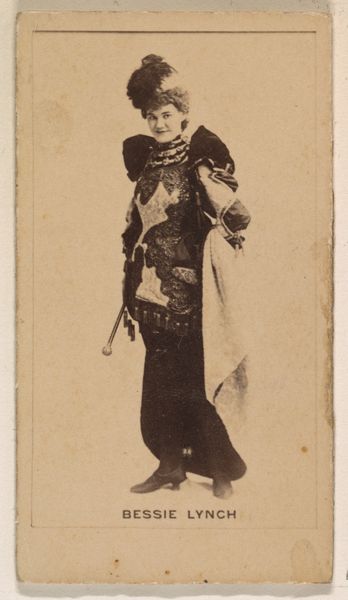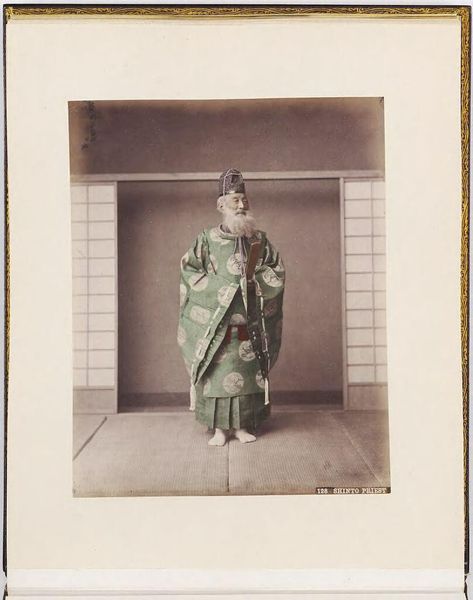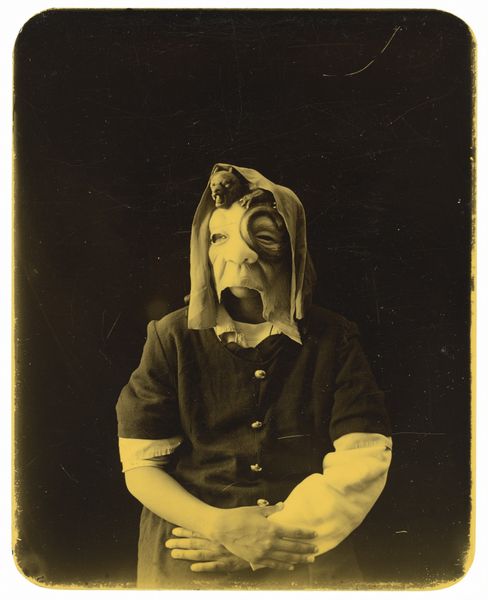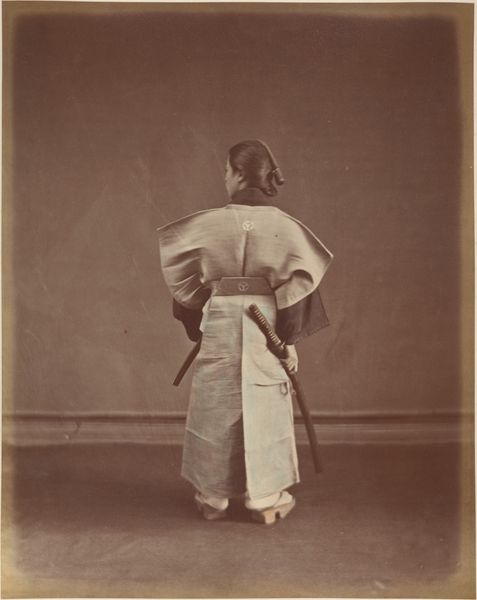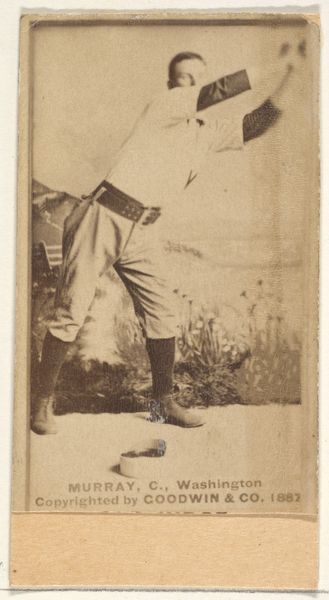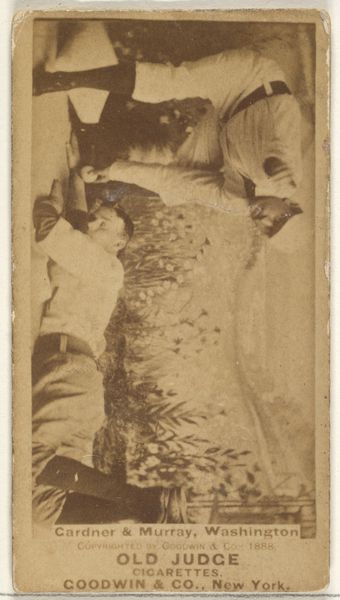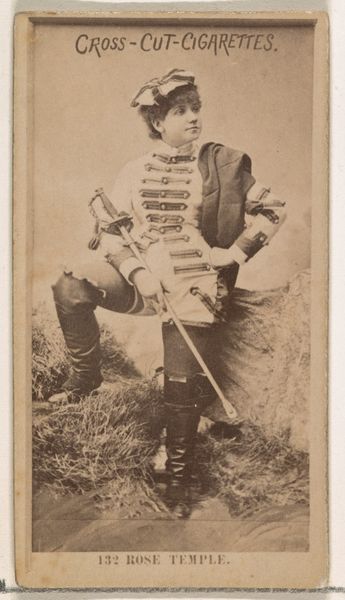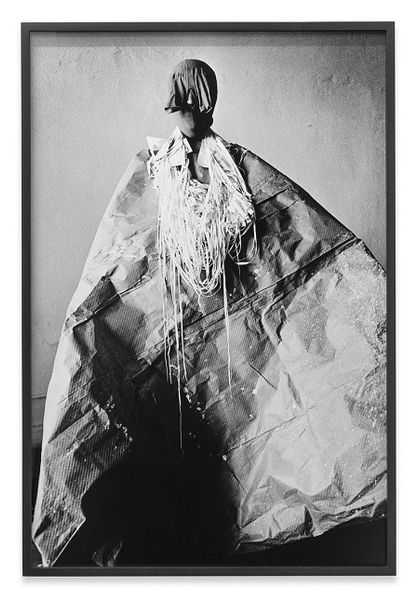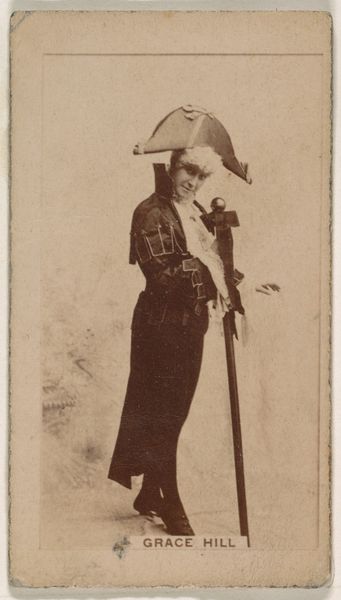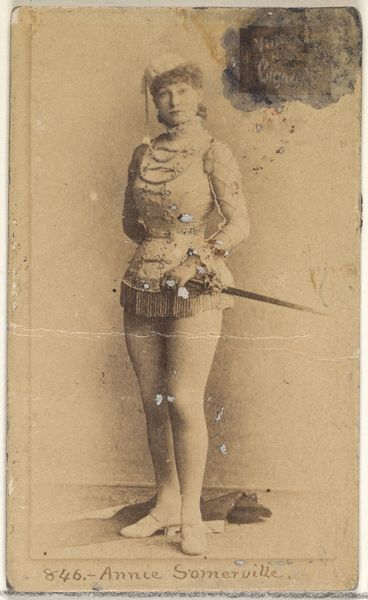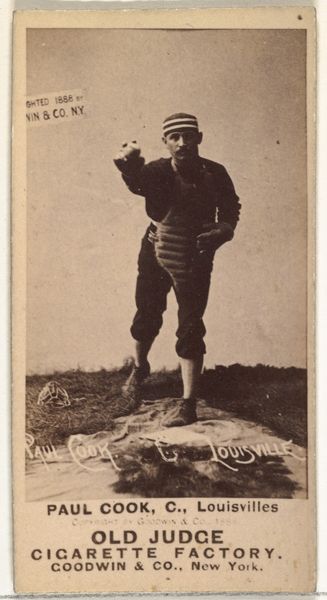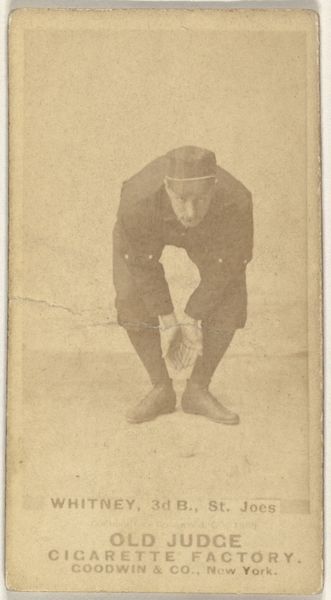![[Japanese Woman with Parasol] by Suzuki Shin'ichi](/_next/image?url=https%3A%2F%2Fd2w8kbdekdi1gv.cloudfront.net%2FeyJidWNrZXQiOiAiYXJ0ZXJhLWltYWdlcy1idWNrZXQiLCAia2V5IjogImFydHdvcmtzLzc0NzQzYzBmLWZlM2QtNGI0MS05NzNmLWUyMjY0N2MxMmFlMy83NDc0M2MwZi1mZTNkLTRiNDEtOTczZi1lMjI2NDdjMTJhZTNfZnVsbC5qcGciLCAiZWRpdHMiOiB7InJlc2l6ZSI6IHsid2lkdGgiOiAxOTIwLCAiaGVpZ2h0IjogMTkyMCwgImZpdCI6ICJpbnNpZGUifX19&w=3840&q=75)
albumen-print, photography
#
albumen-print
#
portrait
#
photography
#
historical fashion
Dimensions: 25.1 x 20.3 cm (9 7/8 x 8 in.)
Copyright: Public Domain
Editor: This is a photograph called "Japanese Woman with Parasol," taken in the 1870s by Suzuki Shin'ichi. It strikes me as a staged portrait, but there's a vulnerability in the woman's gaze. How do you interpret this work within its historical context? Curator: I see a potent example of Japonisme, a Western fascination with Japanese aesthetics and culture during the late 19th century. But beyond aesthetic appreciation, we need to question the power dynamics at play. How does this image participate in constructing a Western gaze onto Japanese identity, particularly onto women? Consider the title itself: "Japanese Woman with Parasol," reducing her to a signifier of exoticism. Editor: That's interesting. I hadn't considered it that way. So, the focus isn't just on the beauty or novelty, but also on the potential for misrepresentation? Curator: Precisely. This photograph exists within a broader history of Orientalism, where the "Orient" is often depicted as passive, mysterious, and inherently different from the West. How might the woman in the portrait have felt about being photographed and presented in this manner? Did she have agency in how she was represented? These are the questions we need to ask. And what's your take on the technical execution? Editor: It's definitely a product of its time – the coloring and soft focus give it a dreamlike quality. Knowing that photography was still relatively new, I appreciate its detail and artistry in capturing a fleeting moment, even though that moment was probably constructed. What else can you share? Curator: The very act of staging this photograph within a Western artistic framework is key. By looking critically at the staging, costuming, and overall composition, we can begin to unpack the complex relationship between the observer and the observed, and how identity can be shaped and distorted through representation. Editor: Thanks, I will remember that point. That gives me a lot to think about! Curator: Indeed. And it highlights the importance of continuously re-evaluating the narratives we create around art and history.
Comments
No comments
Be the first to comment and join the conversation on the ultimate creative platform.
